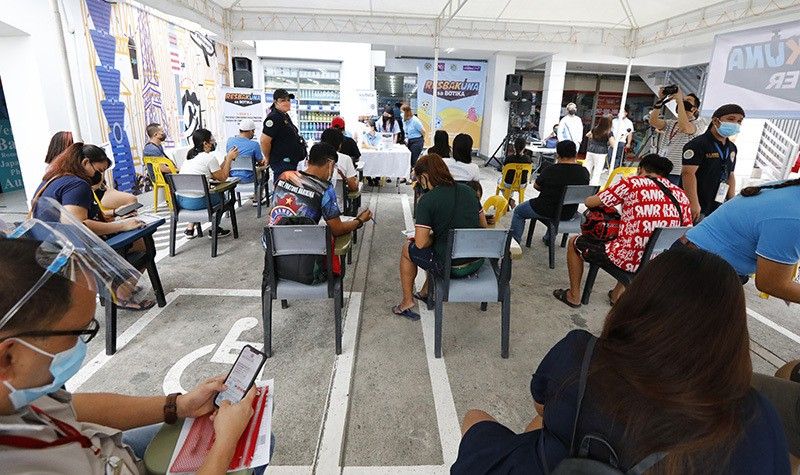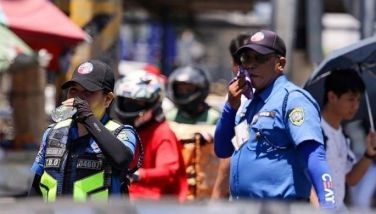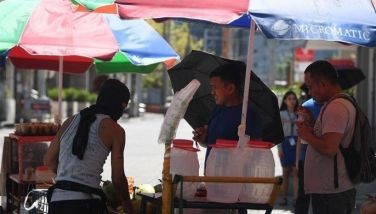OCTA: Five Metro Manila cities now at low risk for COVID-19

MANILA, Philippines — The cities of Caloocan, Pateros, Navotas, Taguig, and Marikina are now classified as being at low-risk for COVID-19 transmission, independent pandemic monitor OCTA Research said Tuesday.
In a series of tweets, OCTA Research fellow Guido David said that reproduction numbers and healthcare utilization rates were in "very low risk" category which ultimately led to the low-risk classification overall.
The five cities all have reproduction numbers of 0.41 or lower. Reproduction number reflects the number of people one COVID-positive individual can infect. The cities also have healthcare utilization of 20% or less.
"The rest of the National Capital Region and other local government units in NCR are still under moderate risk. Continued compliance with health protocols is advised," David said.
Caloocan, Pateros, Navotas, Taguig and Marikina now classified as low risk. The rest of NCR (and other LGUs in NCR) are still under moderate risk. Continued compliance with health protocols advised. @dzbb @DZAR1026 @dzrhnews @allangatus @News5PH @NewsRmn @ali_sotto @dwiz882 pic.twitter.com/YWp7H4QqM2
— Dr. Guido David (@iamguidodavid) February 8, 2022
However, the positivity rate remains at 9.6% across all cities in the capital region, which means that almost one in every ten tests in Metro Manila comes out positive.
The benchmark set by the World Health Organization for opening economies is at 5%, but Metro Manila's positivity rate has since dropped to below 10%. The last time the NCR had less than 10% positivity rate was on December 30, 2021, around the same time the Omicron surge began.
"The NCR remained under moderate risk but is very close to moving down to low risk. Several other LGUs in the NCR are under moderate risk but are close to being classified as low risk," David also said.
"At this rate of decrease, if the trends continue, the NCR could have less than 200 new cases per day by the end of February."
On Monday, Metro Manila made up just 968 of the 6,835 cases around the country recorded by the Department of Health or just 14% of the national number.
Of which, Quezon City and Manila City topped localities once more with 190 and 132 cases, respectively. Makati City also had 113 cases. No other locality breached 80 cases.
"It is a little below our January 20 projections. We should see even lower NCR numbers tomorrow," David said then.
The National Capital Region's cases were up and down to start the month of February, but David pointed out earlier that "a high percentage of this is due to backlog."
The overall classification, David said, was based on indicators used by covidactnow.org. According to CovidActNow, COVID-19 risk in an area is determined based on:
- Daily new cases, which "represents the current amount of COVID in a community."
- Infection rate is the direction and speed of growth. "Daily new cases may be low, but if infection rate is high, then we know that daily new cases will be high in the near future."
- Positive test rate is a measure of our confidence in the underlying data. For instance, if daily new cases and infection rate are both low, but test positivity is high, then the lack of sufficient testing suggests that we are not capturing the true levels of COVID and both daily new cases and infection rate are actually higher than what is currently reported.
David also projected that the DOH could tally as low as 4,000 new cases later Tuesday afternoon, "although this may go up to 5,000 depending on backlog."
"In the NCR, the number could be around 500 to 600," he said.
NCR positivity rate drops below 10%, while ADAR decreased below 10. Reproduction number also decreased to 0.30 while HCUR was at 32%. Public is advised to still observe health protocols. @dzbb @DZAR1026 @allangatus @dzrhnews @News5PH @NewsRmn @dwiz882 @ali_sotto @PhilstarNews pic.twitter.com/vsHTiG5zVE
— Dr. Guido David (@iamguidodavid) February 7, 2022
- Latest
- Trending

































